Cleansing Series: Chickpea Flatbread
This chickpea flatbread (known as Socca) is my go-to choice when I want a quick bread to compliment soups, such as these previous two cleansing soups, or a saucy meal. It's a flatbread native to southern France that is traditionally cooked in a wood-burning oven and served as street food. Consisting of chickpea flour, water, and salt in it simplest form, it's a protein and fiber-rich gluten-free flatbread that takes mere minutes to whip up. It's versatility also allows it to be a cracker substitute for dips/hummus, a foundation on which to build a salad or pile pizza toppings, or to be eaten plain, cut into strips with a sprinkling of salt and olive oil. I have made socca so many times and after much trial and error I've finally found a technique that works for me. (Make sure to read through all suggestions in the footnotes for my conclusions and to ensure you have success too).
This flatbread is very appropriate for the cleansing series because it helps us cultivate a diet of variety. It gives our body a break from digesting wheat, gluten, and dairy products day in and day out and will ensure we get the complexity of nutrients that different plant-based foods contain. Plus to "cleanse" does not mean to deprive oneself of nutrients. It means eating cleaner, smarter, whole, unprocessed foods mindfully so we don't irritate or unduly tax our system. In fact the detoxification process must have quality protein, healthy fats, fiber, and nutrient-dense whole foods to function optimally.
Chickpeas (or garbanzos) have about 12.5 grams of fiber per cup which is 50% of our daily requirements. We all need fiber for healthy digestion, and in particular for assisting the detoxification process in ridding the body of toxins. But as important is that two-thirds of the fiber in chickpeas is insoluble meaning it passes through the digestive tract undigested until it reaches our colon. There bacteria breaks it down into short chain fatty acids, the preferred energy source for the health and optimal function of the cell lining of the colon. Studies have also shown that chickpeas control blood sugar and insulin secretion and provide antioxidant support that can help lower cholesterol and reduce risk of heart disease. All in all, chickpeas are a legume we can all enjoy not only whole in stews and salads but also as a quick and easy bread!
Chickpea Flatbread (Socca)
Makes 2-3 flatbreads
Notes: I use roasted chickpea flour as that's what I can find. But roasted chickpea flour soaks up more water than it's un-roasted counterpart. Un-roasted flour is preferred for socca, and it is also *usually* the variety most readily available. If using un-roasted, decrease water amount to 1 1/4 cups (300 ml).
- 1 cup (164 gr) roasted chickpea flour
- 1/2 tsp. salt
- 1 tsp. ground cumin
- 1 3/4 cups (415 ml) warm water
- Extra-virgin olive oil, ghee, or extra-virgin coconut oil for coating pan
- In a medium bowl whisk chickpea flour, salt, and cumin. Add warm water and whisk well until very smooth and all lumps disappear (it should be the consistency of a thick pancake batter). Set aside on counter for 30 minutes so chickpea flour has time to absorb the water.
- Turn oven to broil, set oven rack in the upper 1/3 section of the oven, and place a 10-inch cast-iron skillet (or other heavy-bottomed non-stick pan) in oven to preheat for 10 minutes.
- Remove skillet from oven once preheated and immediately pour in ~ 2-3 Tbsp. oil of choice, tilting the pan so the entire surface has a generous coating.
- Give the batter one last good whisk and pour 1/3 of it into the pan, again tilting the pan so entire surface is evenly coated with batter.
- Place in oven and cook 7-9 minutes, or until top is lightly blistered and edges are lightly golden brown and curl up slightly.
- Use a thin metal spatula to remove flatbread from pan. Cool on a wire rack, and repeat process for remaining batter. Serve warm right out of the oven as is or cut into strips or squares.
Tips to Ensure Flatbread Success
- Preheat oven and skillet for a good 10-15 minutes (depending on how quickly your oven heats up)
- It is very important for your skillet to be screaming hot when you add the batter, so make sure it is preheating along with the oven for the full 10 minutes.
- Use a tried and true oven-proof non-stick pan or well-seasoned cast-iron skillet. Don't use enamel-coated pans, the flatbread will stick.
- Be generous with oil or fat used (there's no oil in the recipe itself), so there's less chance for flatbread to stick
- The flatbread will likely stick a little in the very center when you remove it from the pan. But if it is sticking more than that, it's likely because there wasn't enough oil in the pan, the pan wasn't screaming hot, or it didn't cook long enough.
- Once you remove the hot skillet, keep oven mitt draped over skillet handle so that you don't accidentally grab the piping hot handle!
- Use a thin metal spatula for easiest removal of cooked flatbread.
- For thicker flatbread, you may cook 1/2 or all the batter at once - adjust cooking times accordingly and lower oven rack for longer cooking times.
- The process for making these is similar to crepes in that it may take a few tries to get it right but once you get a hang of it, they're a breeze to make.



